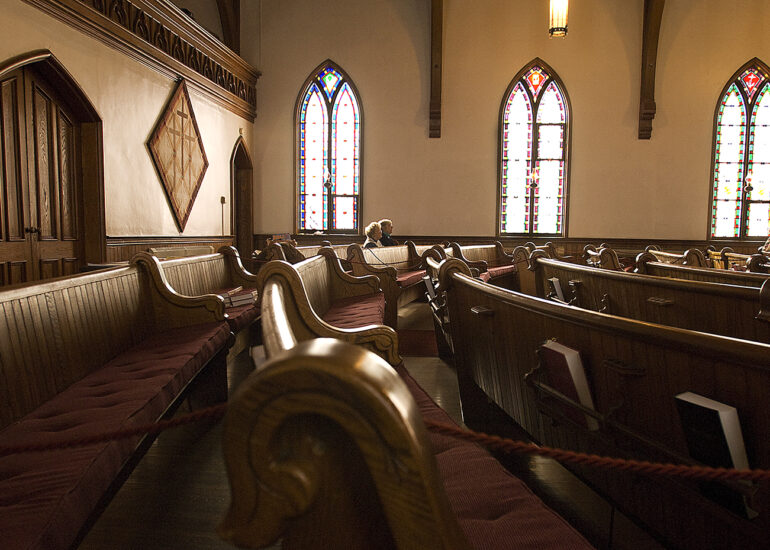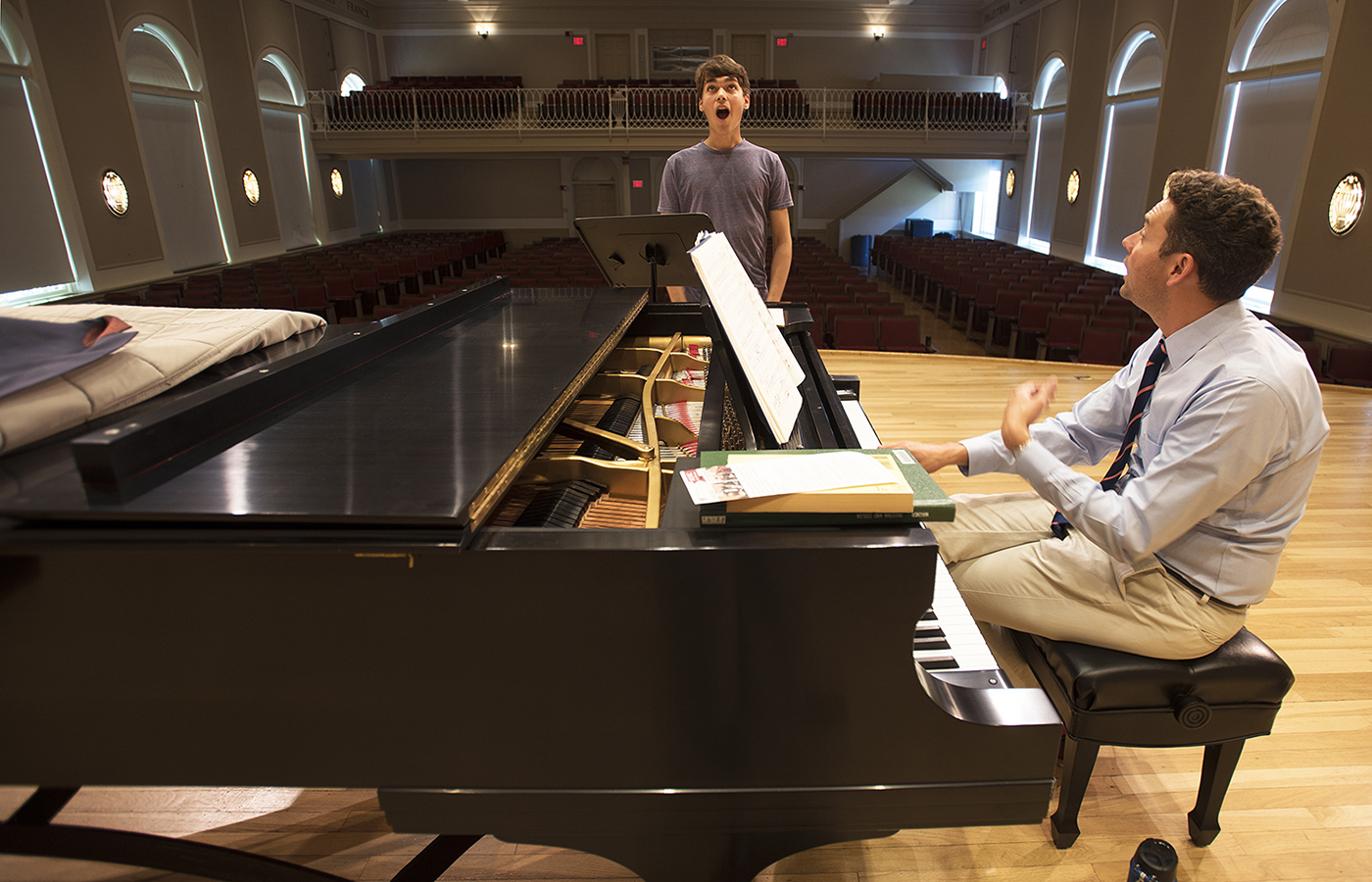Historic Church Struggles to Survive
Historic Church Struggles to Survive
By JEFFREY BLACKWELL/STAFF WRITER
(Published in the Democrat & Chronicle March, 2013)
The First Baptist Church of Fairport can seat nearly 400 people at any given Sunday service in a massive sanctuary with colorful stained-glass windows and old-world carpentry that seems to embrace members in comforting light and warmth.
But despite the nearly 200-year history of the church at Church and Main streets, the beauty of the building and a tall steeple that can be seen above the skyline of the village, on most Sundays the congregation fits in the first two rows of well-seasoned pews.
“I remember being at services where we would have to set up folding chairs in the aisles, the back and everywhere there was a spot to set up a chair because we were so packed,” said Dave Taber, 78, a trustee and lifelong member at First Baptist. “Unfortunately now we are running an attendance of about 40. We have some in their 90s who come every Sunday.”
First Baptist faces a problem many old churches face across the country. Declining and aging flocks are making it difficult financially to support the expense of a historic building that lacks the amenities that draw new members and young families to modern churches.
In the Rochester area, churches have closed and consolidated to cuts costs and boost numbers in remaining facilities, while at the same time, many modern churches are flourishing with young families and new members.
Karen Rinefierd, coordinator of pastoral planning and pastoral council information at the Roman Catholic Diocese of Rochester, said it is difficult to keep these older churches going when flocks are shrinking.
The diocese has closed a half-dozen churches in the past five years because of declining membership and aging buildings. Rinefierd said the diocese considers the historical significance of the building, the size of the membership and the ministry needs of all residents — Catholic and others.
“When we looked at the number of people in the church versus the ministry needs and the costs of maintaining all those facilities, the decisions is first made locally and then ratified by the bishop to consolidate several into one church,” she said. “But I think for us the quality of the ministry and the response of the needs of the people is the highest point, our primary priority.”
The origins of First Bapist of Fairport date back to 1816 when a group of people met in a schoolhouse on Macedon Center Road. The first church was built in the 1840s or 1850s and the church that now stands at the corner was built in 1876 with the help of the influential Deland family. Their home is across the street.
The brick church is a landmark in the village. The 184-foot steeple is one of the first village markers people see as they commute into the community from almost every direction. The building is on the National Register of Historic Places and is an official village landmark.
Cassandra Pratt, 23, grew up in the church with her family and is currently its youngest member. The church, she said, is a safe emotional shelter away from home and life’s pressures.
“It’s our home,” said Pratt. “That’s our peaceful time when we have struggles at home or when we are stressed out at work, this is our get-away.”
But membership at the church has been in a free-fall for many years. The membership was between 600 and 700 for much of the 1960s and 1970s with 250 to 300 people attending Sunday services. Ten years ago the average Sunday attendance was about 120 and now it’s about 40 people, most of them older than Pastor Mark Ballard, who is 57.
“You get a young family to visit and they may like the music and they may like the preaching, but they don’t see people their own age or any children for their children and so they go elsewhere,” said Ballard.
Falling membership is putting a financial strain on the church. First Baptist owns three parcels: the church, the parsonage behind it and the Deland Center next door. The home is rented and, up until last year, the Deland Center was bringing in income from a lease to a small, private Catholic-based school that moved to empty space at The Church of St. Jerome in East Rochester.
Church officials have hired a broker to lease the space, so far without success. The size and age of the church is also a burden. Recently, it cost $4,000 to replace a small section of slate roof shingles. Another section of shingles fell off after the repair.
“We had water problems in the basement over the summer, six feet deep in the basement,” said Ballard. “The fire department came and pumped it out and one of the building’s two water heaters split open. The building is 140 years old; stuff like that just happens.”
And each time it happens church leaders have to dip into a $200,000 endowment fund to pay for the repairs. Utilities alone on the building are more than $12,000 a year. Ballard said if the church cannot lease the Deland Center, in six months they will be in trouble.
At Perinton Presbyterian Church, a mile south of First Baptist, the challenge is not membership or empty seats at Sunday service but keeping up with the full schedule of church programs, scouts meetings and other organizations at the facility on Pittsford-Palmyra Road. The church has about 500 members and two Sunday services that draw about 250 people a week with a demographic that includes young people, families with children and people in their 40s and above.
The church was built in 1988 and expanded several years ago to accommodate a growing menu of programs, including church school, junior and senior high fellowship and adult education classes, choirs, support groups, Bible study, and fellowship.
But vibrant as his church is, the Rev. Steven Becker, pastor of Perinton Presbyterian, said he knows fortunes can change in a generation. He said he keeps in mind the story of Central Presbyterian on Plymouth Avenue in Rochester. The historic building was the site of the funerals of Frederick Douglass (1895) and Susan B. Anthony (1906) and now it is the home of the Hochstein School of Music and Dance.
“Back around 1900 to 1910, that church, I believe, hosted the largest Christian education program in the country and 65 years later it was up for sale,” Becker said.
“For me as a pastor it is really scary that you can go from one extreme to another in literally one generation. I think this is relevant to all pastors of churches.”
Taber, Ballard and several new members are trying to identify ways to bring in new members to First Baptist and expand the church’s ministry in the community.
“A lot of people my age think when they die, everything is going to fall apart and everything else will die,” said Taber, 78. “Well, this church is evidence that these people who started this church, who built this church, which I have enjoyed all my life, built it with the intention that it was going to go on.”
Fairport Church

Empty Pews

Fairport Church

Fairport Church

The Rev. Mark Ballard

Choir

Congregation's Only Child

Bell Ringer

Organist

Worship in Reverance

Empty Pews

Stained Glass

Founder

Comunion

Blessing

Dave Taber

Cassandra Pratt

Fairport Church



























